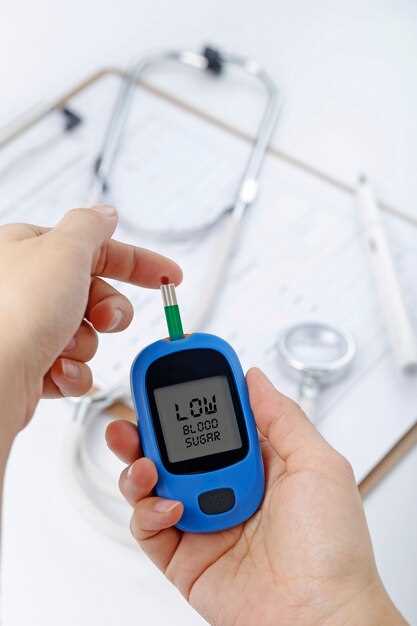
Are you experiencing symptoms of diabetes insipidus after taking hydrochlorothiazide? You are not alone. Hydrochlorothiazide, a commonly prescribed medication for high blood pressure, can sometimes lead to the development of diabetes insipidus.
What is diabetes insipidus?
Diabetes insipidus is a rare condition that affects the body’s ability to regulate water balance. Unlike diabetes mellitus, which involves high blood sugar levels, diabetes insipidus is characterized by excessive thirst and the production of large amounts of diluted urine.
How does hydrochlorothiazide cause diabetes insipidus?
Hydrochlorothiazide is a diuretic, meaning it increases urine production and helps eliminate excess fluid from the body. However, in some cases, hydrochlorothiazide can disrupt the normal balance of water in the body and lead to the development of diabetes insipidus.
What can you do?
If you are experiencing symptoms of diabetes insipidus after taking hydrochlorothiazide, it is important to speak with your healthcare provider. They can evaluate your symptoms, adjust your medication if necessary, and provide guidance on managing your condition.
Disclaimer: This article is for informational purposes only and should not be taken as medical advice. Always consult with your healthcare provider before making any changes to your medication or treatment plan.
Symptoms and Diagnosis
Hydrochlorothiazide induced diabetes insipidus can present with a range of symptoms that may vary in severity from person to person. Some common symptoms include:
- Persistent thirst
- Increased urination
- Extreme fatigue
- Unexplained weight loss
- Dizziness
- Dehydration
If you are experiencing these symptoms and are currently taking hydrochlorothiazide or have recently stopped taking it, it is important to consult with your healthcare provider for a proper diagnosis.
Diagnosis
Diagnosing hydrochlorothiazide induced diabetes insipidus typically involves a combination of medical history review, physical examination, and laboratory tests. Your healthcare provider will ask about your symptoms and any medications you are currently taking, including hydrochlorothiazide.
During the physical examination, your healthcare provider may check for signs of dehydration and perform a urine analysis to measure urine volume and concentration. Additionally, blood tests may be done to check for imbalances in electrolytes and other markers that can indicate diabetes insipidus.
If the initial tests suggest the presence of diabetes insipidus, further diagnostic tests, such as a water deprivation test or vasopressin challenge test, may be performed to confirm the diagnosis and determine the underlying cause.
Note: It is important to provide your healthcare provider with accurate information about your symptoms and medication use to ensure an accurate diagnosis.
Remember, timely diagnosis is essential for developing an appropriate treatment plan and managing hydrochlorothiazide induced diabetes insipidus effectively.
Treatment Options and Management
Preventing hydrochlorothiazide-induced diabetes insipidus involves careful monitoring and management of the condition. Here are some treatment options and management strategies:
1. Adjusting Medication
The first step in managing hydrochlorothiazide-induced diabetes insipidus is to adjust the medication dosage or switch to an alternative medication under the supervision of a healthcare professional. This could involve reducing the dosage or switching to a different diuretic that is less likely to cause diabetes insipidus.
2. Fluid and Electrolyte Management
It is crucial to maintain adequate fluid balance and electrolyte levels in the body. This may include increasing fluid intake to compensate for the excessive urine output and adjusting electrolyte levels through dietary modifications or supplementation.
3. Lifestyle Modifications
Patients with hydrochlorothiazide-induced diabetes insipidus may benefit from certain lifestyle modifications. These can include:
- Limiting caffeine and alcohol intake, as these can act as diuretics and worsen symptoms.
- Implementing a regular exercise routine, which can help regulate urine output and manage overall fluid balance.
- Following a well-balanced diet that includes foods rich in essential electrolytes, such as potassium and sodium.
4. Monitoring and Regular Check-ups
Ongoing monitoring and regular check-ups with a healthcare professional are crucial for managing hydrochlorothiazide-induced diabetes insipidus. This allows for the close monitoring of symptoms, medication adjustments, and ensuring that electrolyte levels are within a healthy range.
By following these treatment options and management strategies, individuals with hydrochlorothiazide-induced diabetes insipidus can effectively manage their condition and improve their quality of life.
Prevention and Risk Factors
To prevent hydrochlorothiazide induced diabetes insipidus, it is important to consider the following risk factors:
1. Dosage and Duration
The risk of developing diabetes insipidus is higher with higher doses of hydrochlorothiazide and prolonged use. It is crucial to follow the prescribed dosage and duration as directed by your healthcare provider.
2. Age and Gender

Studies have shown that older adults and females are more prone to developing hydrochlorothiazide induced diabetes insipidus. Individuals in these demographic groups should be particularly cautious and closely monitor their symptoms when using this medication.
3. Existing Medical Conditions
Individuals with pre-existing medical conditions like hypertension, heart disease, or kidney problems may be at a higher risk of developing diabetes insipidus when taking hydrochlorothiazide. It is important to discuss your medical history with your healthcare provider before starting this medication.
4. Lifestyle Factors
Certain lifestyle factors like a sedentary lifestyle, poor diet, excessive alcohol consumption, or smoking can increase the risk of developing diabetes insipidus. Maintaining a healthy lifestyle with regular exercise and a balanced diet can help reduce this risk.
5. Regular Monitoring

Regular monitoring of blood sugar levels and kidney function is essential for individuals taking hydrochlorothiazide. This can help detect any early signs of diabetes insipidus and allow for prompt treatment and management.
By considering these prevention strategies and risk factors, individuals can minimize the likelihood of developing hydrochlorothiazide induced diabetes insipidus and ensure their overall health and well-being.
Research and Studies
Research plays a critical role in the understanding and management of hydrochlorothiazide-induced diabetes insipidus. Scientists and medical professionals have conducted numerous studies to examine the effects of hydrochlorothiazide on the body, as well as to explore potential treatment options.
Exploring the Mechanism of Action
Researchers have delved into understanding the mechanism of action of hydrochlorothiazide and its impact on fluid balance within the body. By studying the drug’s effects on the kidneys and the regulation of water reabsorption, scientists aim to gain insight into how hydrochlorothiazide leads to diabetes insipidus.
These studies have helped identify specific molecular pathways involved in hydrochlorothiazide-induced diabetes insipidus, providing a foundation for further research and potential therapeutic interventions.
Evaluating Treatment Approaches
Various studies have evaluated different treatment options for individuals with hydrochlorothiazide-induced diabetes insipidus. These investigations have examined the effectiveness of medications, such as desmopressin, in managing the condition and alleviating symptoms.
Research has also explored the potential benefits of lifestyle modifications, such as dietary adjustments and increased fluid intake, in improving outcomes for those affected by hydrochlorothiazide-induced diabetes insipidus.
The findings from these studies are crucial for healthcare professionals in developing personalized treatment plans and improving the overall quality of life for individuals living with this condition.
Furthermore, ongoing research is exploring alternative medications that may offer similar therapeutic benefits of hydrochlorothiazide but without the risk of inducing diabetes insipidus. These studies aim to provide alternative options to minimize the potential side effects associated with hydrochlorothiazide use.
In conclusion, research and studies surrounding hydrochlorothiazide-induced diabetes insipidus are integral in advancing our knowledge and developing effective management strategies. Through ongoing investigations, researchers are paving the way for improved treatment options and ultimately enhancing the lives of those affected by this condition.
Impact on Quality of Life
The impact of hydrochlorothiazide-induced diabetes insipidus on an individual’s quality of life can be significant. This condition, characterized by excessive thirst and urination, can disrupt daily activities and have physical, emotional, and social consequences.
Physical Impact
Individuals with hydrochlorothiazide-induced diabetes insipidus may experience fatigue due to disrupted sleep caused by frequent trips to the bathroom during the night. Dehydration can also occur if water intake cannot keep up with urine output, leading to symptoms such as dry mouth, dizziness, and headache.
Emotional and Social Impact
Living with hydrochlorothiazide-induced diabetes insipidus can be emotionally challenging. Constant thirst and the need to be near a restroom at all times can cause anxiety and frustration. It may also limit participation in social activities and events, as individuals may fear not being able to find a restroom or being judged by others for their frequent urination.
Moreover, the impact on quality of life extends beyond the individual experiencing hydrochlorothiazide-induced diabetes insipidus. Family members and loved ones may also be affected by the condition, as they may need to make accommodations or adjustments to their routines to support and care for the affected individual.
It is important for individuals with hydrochlorothiazide-induced diabetes insipidus to seek appropriate treatment and management strategies to minimize the impact on their quality of life. Working closely with healthcare professionals and following recommended dietary and lifestyle modifications can help improve symptoms and overall well-being.
